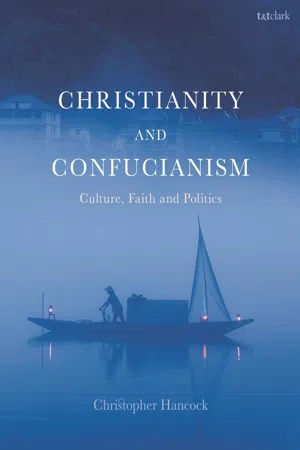![]()
PART I
InPart I we meet two men. They travel with us down the centuries covered by this book. At times we will sense their presence, their words and deeds directly affecting our journey. At other times, we will not be aware they are there. Perhaps we have ignored or forgotten them. Perhaps they – or we – have drifted away. This can be disconcerting, discouraging even. But we shouldn’t be worried. These are good men, who understand, really understand people, us. That is part of their genius. They understand fellow travellers as no mountain guide ever can. They anticipate questions, and answer needs, as no tour guide ever could. They set a pace that is both comfortable and challenging. They keep quiet, give us space, test our resolve, leave room for reflection. They add new information to keep our senses alert. Most importantly of all, they don’t just say, ‘Admire that view’, or ‘This is the time meals are served’: they share the view, they serve the meal. They are part of the journey – no, they are the journey, both making it and making it worthwhile. Little wonder we associate them both with ‘the Way’.
There is something else we should be prepared for. These guides expose us to risk. They challenge us to attempt that pitch, to scale that wall, to go ‘off piste’ and face up to our fears. In the process, we see a striking integrity in their theory and practice. They don’t say, ‘Go and do, while I do nothing.’ They say, ‘Come and see’, and – perhaps most strikingly of all – ‘Come and see what I do.’ They claim to be examples and guides. They set the bar high and call their travelling companions, their disciples, to do the same. Unlike a doctor who claims to keep the Hippocratic Oath while ignoring suffering, or the musicologist who says notes on a page are great music, or the priest who preaches godliness while practising infidelity, these great guides ‘walk their talk’. Their ideal becomes a reality, their ethics are embodied, in them ‘words’ become ‘flesh’.
![]()
CHAPTER ONE
Confucius, ‘The Master’ and Cultural Decay
Virtue is never solitary; it always has neighbours.
—A. 4.25
The next two chapters form a pair: better, perhaps, they examine two big figures on one dark old canvas. Like Leonardo da Vinci’s (1452–1519) masterful Mona Lisa (c. 1503–6), their eyes look deeply, follow carefully, interrogate, laugh, and perhaps even love us. It is hard to share a room, a gaze, or a lot of time with them, without being disturbed and consoled in equal measure. We may be more familiar with one face than the other, or unused to seeing them together. The canvas we are looking at needs cleaning. The light could be brighter, our mind and memories could be stronger. We should not be dismayed. Like da Vinci’s portrait of Lisa del Giocondo (1479–1542),1 the Mona Lisa – the young wife of a wealthy silk trader and a scion of Tuscany’s Gherardini clan – if we look carefully, we discover they too are peaceful figures in another priceless masterpiece, with an inviting smile in their eyes.
We turn first to Confucius (c. 551–479 BCE). We can make out a bulbous head and ample physique, his rough-textured appearance well-suited to a van Gogh portrait.
2 We know he was born
3 – and is buried – in
Zou Yi
(
Qufu
) in the state of
Lu
, one of the vassal territories of the
Zhou Dynasty
(c. 1042–249 BCE), located in
Shandong Province in modern southeast China. He is a contemporary of
Buddha and the Old Testament
prophecy and writings on Israel’s Babylonian exile and return to Jerusalem.
4 His Western name, ‘Confucius’, is the Latinized version of the honorific title early Jesuit missionaries gave the celebrated Kong Fuzi
5 (Master Kong), whom they found sitting – as to many Chinese he still sits – at the heart of
China’s ancient culture.
6 From his appearance, and the little historical data we have, it seems he was for much of his life, like ‘the suffering servant’ of
Isaiah’s prophecy, ‘despised and rejected, a man of sorrows and acquainted with grief’ (Is. 53.3). His protégé
Mencius, or Meng Zi
(c. 372–303 BCE),
7 would claim otherwise: ‘Ever since man came into this world, there never has been another
Confucius’ (M. 2A. 2). If we want to know about this towering figure ‘the best thing we can do is look at the
Analects’ (Dawson 1981: 5). This is our best canvas. There we find what Swiss-German psychiatrist-philosopher Karl
Jaspers (1883–1969) described as a ‘paradigmatic individual’, one of few people in history who, when faced by public obloquy and political chaos, ‘lived what they preached, and represented a very high personal ethic … expressed in clear moral demands’ (1962: 51). As we can guess, Confucius is larger than life, intimidating on first acquaintance. We have to work to
see a twinkle in his eyes. With cleaning they shine.
So, what can we say? From the outset, Confucius’s life and work divided opinion. His increasingly grand titles – ‘Great Sage’
, ‘First Teacher’
, ‘Model Teacher for Ten Thousand Ages’
, ‘Laudably Declarable Lord Ni’
(fr. 1 BCE) and ‘Extremely Sage Departed Teacher’
(fr. 1530) – match his growing profile, but ‘lives’ about him conflict.
8 Each age has its own Confucius (Littlejohn 2011: 15). The historian
Gu Jiegang
(1893–1980) advised: ‘Take one Confucius at a time’ (q. Nylan and Wilson 2010
: 26).
9 To Nylan and Wilson, five frequent criticisms of Confucius recur (ibid., 29–66);
10 his identity and profile always intertwined over the centuries with politics, ideology, academic debate, personal rivalry, traditions in historiography and prevailing state orthodoxy. Reviews have always been mixed. Friedrich Hegel (1770–1831), the German phi...












